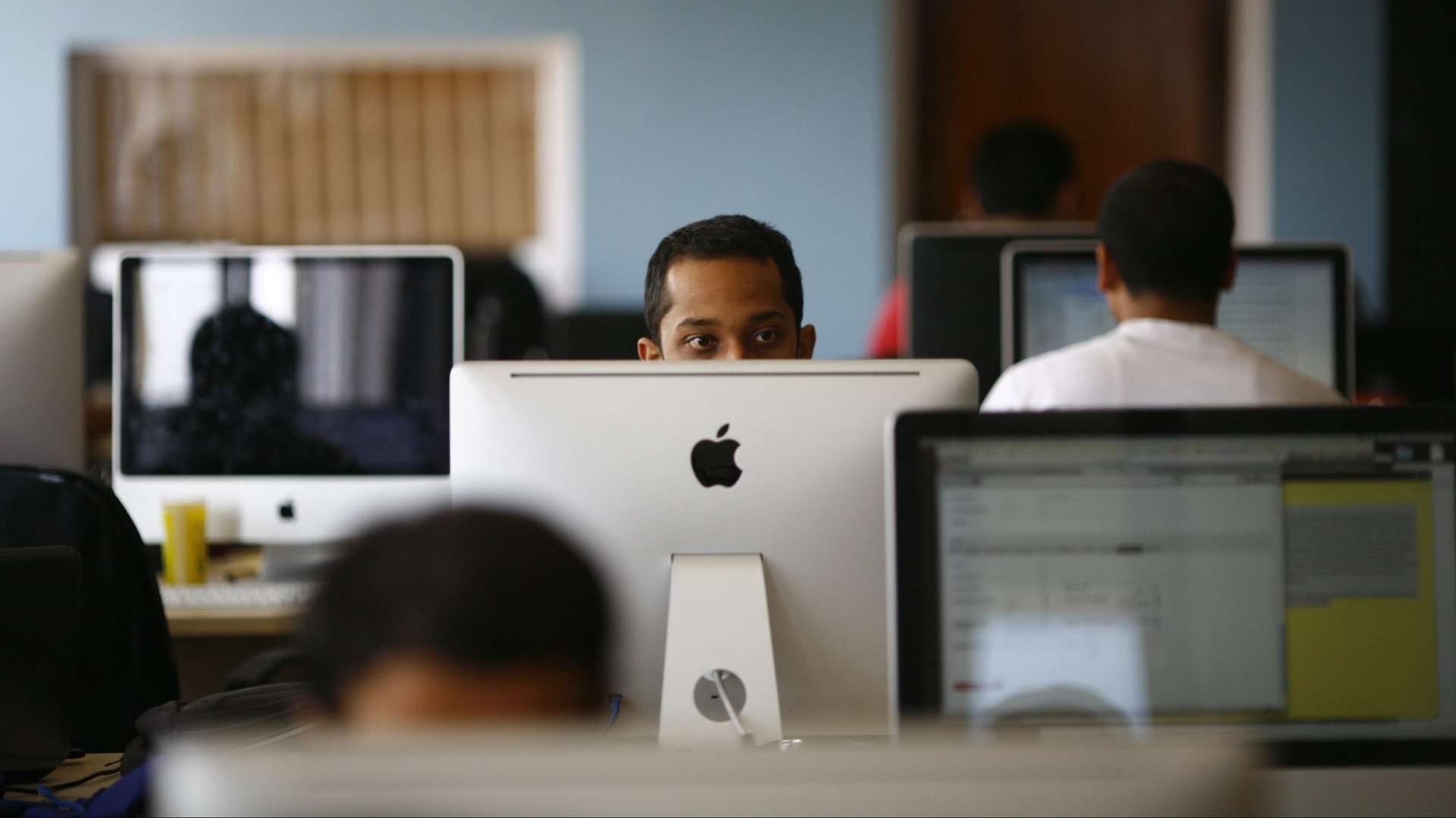How my colleagues and I stay sane in our open office
In 1999, Mike Judge released Office Space, the movie that encapsulated the soul-sucking experience of working a dull corporate tech job, replete with stale gray cubicles, long hours, and obnoxious workplace distractions.


In 1999, Mike Judge released Office Space, the movie that encapsulated the soul-sucking experience of working a dull corporate tech job, replete with stale gray cubicles, long hours, and obnoxious workplace distractions.
In 2019, we’ve had 20 years to improve, but somehow our working conditions—especially for large software companies—have gotten even worse. The jobs are still soul-sucking. The hours are still dreadful. And the co-workers are still distracting.
We’ve got a new problem on our hands, though: With the rise of the terrible open-plan office, there aren’t even cubicle walls anymore.
This inexplicably trendy office design has employees ganged together in close quarters, sharing rows of desks and workstations, with no physical boundaries or privacy.
These offices are practically built for perpetual interruption. If anyone speaks, makes noise, eats, breathes, or moves around, it affects everyone in the vicinity. At best, it’s mildly irritating. In the aggregate, it’s a full-on sensory assault.
Curious about this persistent trend, I took to Twitter to survey folks who work in open office spaces.
I heard some horror stories.
Managers conduct negative performance reviews loudly in the open, for everyone to hear. People leave food to rot on their desk for days.
And more.
Even if you do manage to tune out all that office chaos, you’re still pestered on your computer screen by group chat notifications, email notifications, text message notifications, and notifications about your notifications.
These conditions are proven to be bad for productivity. But, walk into any hip tech office, and I bet you’ll find just such an arrangement.
At my company, Basecamp, we have an open office setup, too. We’ve also spent almost two decades thinking about how people work together, and what encourages good and healthy work environments. So far, we have determined that most employees need long, uninterrupted blocks of time to do their best work, and we continually adjust our own communication and processes to make that happen.
Here are a few tricks we’ve found to soothe those open-office nightmares.
Office rules = library rules
Yes, we have an open office plan. But most of the time, it’s nearly silent. That’s because we have an official library rules policy—if you’re going to work in our office, you must be respectful of people’s focus, just as you would in a library. That means hushed voices, or no talking at all. No loud noise, no music, no phones.
What if we need to talk, make a phone call, or discuss something? We move into an enclosed, private meeting space, separate from the open desks. Or, we send each other messages online—even when we’re physically right next to one another.
Flexible remote work options
Basecamp is a remote-first company, which means we only come to the office if we have a reason to meet face to face—just like approximately 25% of US employees who work remotely all or most of the time.
If you’re not currently remote, try allowing your employees to work outside of the office once or twice a week. A break from the office will be happily received, and the returns in morale and output will be substantial.
No-talk Thursdays
If you can’t turn your office into a library zone, or allow people to work elsewhere, at least try quieting things down once a week. We call this “no-talk Thursdays.” No meetings, no open conversations—an entire workday of silence. As a result, we find that Thursday is usually the day when everything gets done.
Asynchronous communication (as much as possible)
Real-time chat is great for lots of reasons, but it creates the same problem as the phone: someone can interrupt you on their schedule instead of yours. If you’re deep in concentration and get mentioned in a chat, that concentration is suddenly broken.
We handle this in two ways: One, we encourage people to write things in longer-form messages for thoughtful consideration, instead of hashing something out in a scattershot, two-hour chat session. This gives people space to read and ruminate on their own time, and then respond when they’re ready, instead of feeling glued to a chat window all day.
Two, we don’t expect instant responses—from anyone. If you direct message someone, you might hear back right away, or an hour later—and that’s just fine. This is no big deal when it’s a mutual understanding.
To make these changes, you might need to wean your team off of their Slack and IM addictions. Make sure you have a good tool for sending asynchronous messages.
Quality time instead of clock time
The ideal result of a good work day is getting some actual work accomplished. If you’re putting in eight, 10, or 12 hours a day and still not getting anything done, what’s the point of coming to work? Why are you punching the clock only to be endlessly distracted?
Protect your time and energy, and treat it like the valuable limited resource that it is. Optimize for focused time as much as you can by blocking out contiguous work hours on your calendar, and bundling meetings together at the beginning or end of the day.
You might end up making the same progress with only 20 focused hours that you would have made in 60 tired or distracted hours.
Maybe companies will get office designs right in the next 20 years. But until then, try these simple tweaks. I’ve found that small adjustments can make a big difference. They may not be enough to overcome the myriad challenges of a wide-open office environment, but they’ll help you regain a bit of calm.
And no matter what, please, please keep those toenail clippers at home!